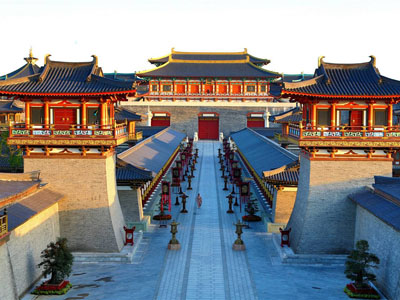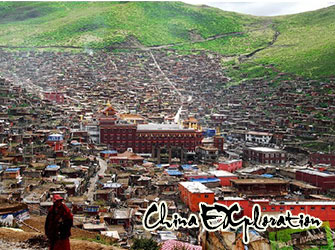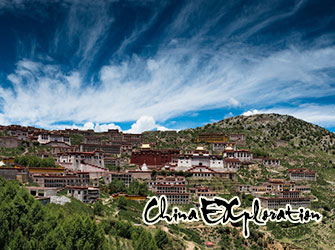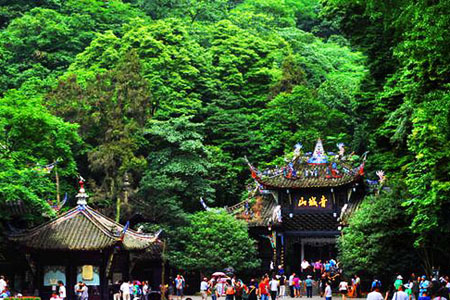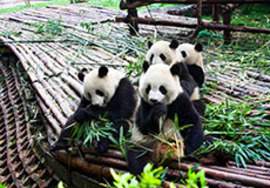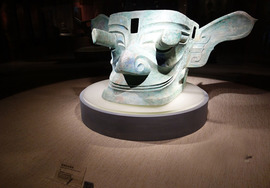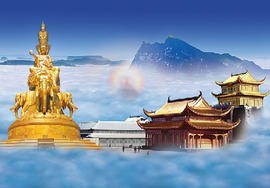The huge monastery of Drepung Monastery, Sera Monastery, and Ganden Monastery were three greatest monastery groups in Tibet before 1959. They possessed a large number of property, including land, house estates, pastures, hills and founds. And they also dominated large quantities of serfs and slaves directly as well as managed business extensively, and they were also one of the largest owners of the usury loan.
Rewarded by the central governments of every dynastery, they also took allowance from local Tibetan government, enjoyed various religious privilages, and they even involved in the politics of Tibet. The monastery groups were largest offical temples in Tibet area, the representitive of theocracy in Tibet, deputy of unification of monks and nobles in Tibet politics, and they were also the highest authorities in religion beyond dispute.
Innumerable houses and pavillions rising one above the other, three monastery were stationed thousands of monks every year. The regular quotas were 7.700 in Drepang monastery, 5,500 in Sera monastery, 3,300 in Ganden Monastery. Panchen system and Dalai Lama excepted, all of the Lamas of Gelugpa section were belong to these monasteries. And the monasteries of Gelugpa of everywhere, no matter its distance in location nor its size in scale, all were subordinated to these three great monasteries.
It was the similarity that Laji, Dratsang and Khangtsen were the formation of the three great monasteries. Laji was the top organization of whole temple, and Dratsant was the middle but backbone of the temple, and Kangchun was the ground of the monastery.
The three great monasteries were all monastery of formed by two or more Dratsangs. Drastangs could be simply set according to the division of the exotoric Buddhism and the Tantric Buddhism . And in the large monastery, either exotoric Buddhism or Tantric Buddhism could be devided as more Dratsangs, for example, Drespang Monastery possessing three Exotoric Dratsangs and one Tantric Dratsangs, Sera Monastery possessing two Exotoric Dratsants and one Tantric Drastangs, and Ganden Monastery possessing only two exotoric Dratsangs in all. Various differences were widely existed between Dratsangs in the same monastery on learning cources, ruiles and system, even external relationships, which proved the high independance of Dratsangs in organization.
Khenpo Lama was the master of the Dratsangs, firmly managed the scripture learning, executive business, estate of monastery, serfs, salves, and also atended the important conference of local Tibetan government. And the Khempo Lama of key Dratsangs was not only the head of his Dratsang, but also the member of leader group of the whole monastery. The Khempo Lama of the three great monastery were all appointed by the Tibetan Government from their crony with Geshe degree. Even presidency of Khempo was six or seven years, and could be reappoined.
And Khempo would appointed three post of Larang Gyanto, Guige and Xionlaiba to manage the Dratsang for him in details. Leading another Gyantos, Larang Gyanto, the general manager of Khempo, manged the exective business, property, serfs and external relationships for Khempo Lama in details. Anybody ranked as Khempo Lama was qualified to set a private mansion called Larang, and all of the property of Larang belonged to Khempo privately. As judge Dratsgang, Guige manged the order of Dratsang and settled the disputes between monks on behalf of Khempo Lama. It was a hot and powerful post for easiness of blackmail. Wontze was leader of chanting scripture. And xionglaiba was supervisor of monks for their scripture learning and examination of Geshe.
Khangtsen was the basic oraganization of monastery with strong color of region, the monks from same region or relative would be inducted into the same Khangtsen. Khangtsen was the place monk lived and the family. The scale of Khangtse varied greatly according to area and economic power of monks. For those large Dratsang, it could be formed by many Khangtse, for example, Noselin Dratsang was formed by 23 Khangtsens in Drepang monastery.
The realitic position of Khangtsen varies greatly due to the difference of their property and power of monks. Sometimes the position of a poor Drstang was even lower than a rich Khangtsen. An executive committee managed the ordinary business of the Khangtse, and an eldest monk called Gigen hosted all.
Related Tours
